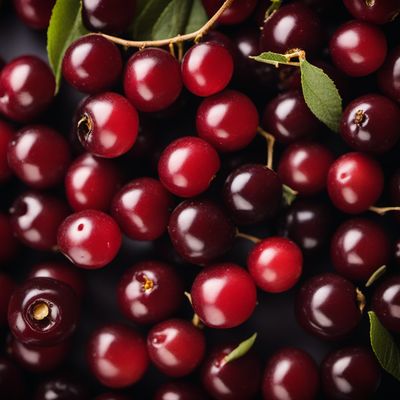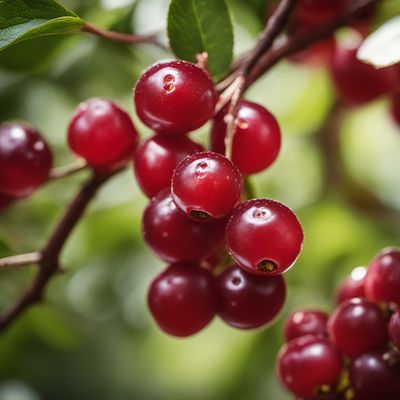
Ingredient
Cornelian cherries
The Tangy Gems of the Fruit World: Cornelian Cherries
Cornelian cherries, scientifically known as Cornus mas, are small, round fruits that resemble cherries but are actually a type of dogwood. They have a bright red skin and a tart, tangy flavor that is reminiscent of cranberries or sour cherries. The texture of the fruit is firm and slightly crunchy, with a juicy interior. When fully ripe, the cherries can range from sweet to pleasantly sour. They are often used in preserves, jams, sauces, and desserts due to their unique taste and vibrant color.
Origins and history
Cornelian cherries have a rich history dating back thousands of years. They are native to Europe and Western Asia and have been cultivated since ancient times. The fruit has been mentioned in Greek and Roman literature, and it was highly valued for its medicinal properties. In some cultures, the cherries were believed to have aphrodisiac qualities. Today, they are still widely grown in these regions and are enjoyed for their culinary and nutritional benefits.
Nutritional information
Cornelian cherries are a good source of vitamin C, providing about 30% of the recommended daily intake per serving. They also contain significant amounts of fiber, potassium, and antioxidants.
Allergens
Cornelian cherries are not known to be allergenic.
How to select
When selecting cornelian cherries, look for fruits that are plump, firm, and have a deep red color. Avoid cherries that are overly soft or have blemishes or mold. The cherries should have a slightly sweet aroma.
Storage recommendations
Cornelian cherries can be stored in the refrigerator for up to a week. To extend their shelf life, you can also freeze them. Simply wash and dry the cherries, remove the pits if desired, and place them in a freezer-safe container or bag.
How to produce
Cornelian cherries can be grown in home gardens or orchards. They prefer well-drained soil and full sun. The trees are hardy and can tolerate a range of climates. They require regular watering and pruning to maintain their shape and productivity.
Preparation tips
Cornelian cherries can be enjoyed fresh, but their tartness is often better appreciated when cooked or processed. They can be used to make jams, jellies, sauces, and syrups. The cherries can also be dried and used in baked goods or added to trail mixes. To remove the pits, simply cut the cherries in half and gently pry out the seeds with a knife or your fingers.
Culinary uses
Cornelian cherries are commonly used in Eastern European and Middle Eastern cuisines. They are often made into a thick syrup called "moraba" or used to make a tangy sauce for meat dishes. The cherries can also be used in pies, tarts, and compotes. In some regions, they are fermented to make a traditional alcoholic beverage.
Availability
Cornelian cherries are commonly available in Europe and Western Asia, where they are grown commercially. They can also be found in specialty grocery stores or farmers markets in other parts of the world.


